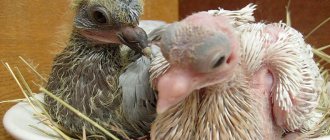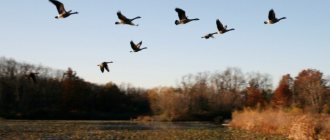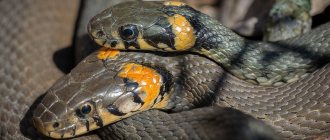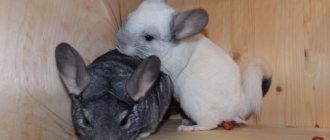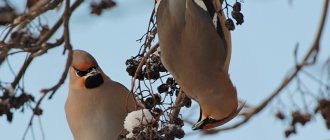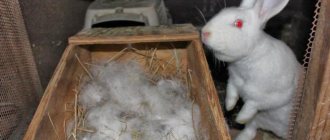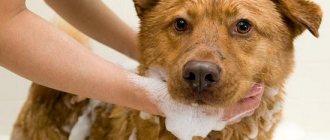Every life prepares a change for itself. In order to understand how birds reproduce, it is worth listening to the opinions of scientists. They are sure that this process is influenced by various factors. For example, the main external circumstance that determines the repeat breeding of birds is the change in the length of day and night.
Every life prepares a change for itself
General characteristics
Before we talk about how birds mate and reproduce, let's discuss their characteristics and the biology of this class of warm-blooded oviparous birds.
The distinctive features of birds are as follows:
- The nervous system is highly developed.
- Various options for adaptive behavior.
- The body has a high temperature. This occurs due to the intensive metabolism of the bird class.
- Compared to other animal species, this species is endowed with a special mechanism that facilitates the rapid reproduction process. This feature is manifested in the ability to hatch eggs, as well as in feeding chicks.
- The presence of special organs called adaptive. They make it possible not only to fly, but also to move freely on land. And some individuals can also swim in bodies of water, moving freely along the water surface.
It is these above-mentioned abilities that allow birds to reproduce so actively and massively throughout the planet.
Why doesn't a chicken lay eggs every day?
The frequency of laying depends on how long the embryo develops in the uterus of the tube. If the egg is formed in less than 24 hours, then the hen lays them every day.
As a rule, ovulation occurs in the first half of the day. When the egg is formed for more than a day, the hen will lay eggs intermittently the next day at 10:00, 12:00 or 14:00 hours. The longer the egg develops, the fewer eggs the laying hen will produce in a row.
Chickens of egg-laying breeds can lay eggs almost daily. Chickens of meat and egg breeds lay eggs every other day, meat breeds lay eggs once every 2-3 days.
Males
Let's talk about the reproductive system of males of this class of animals.
Each male has testes. They resemble ordinary beans and are located above the buds.
The testes are suspended on the so-called mesenteries. The size of the bean-shaped bodies constantly changes throughout the year. When it's time to reproduce, they increase in size.
For example, in the Zyablik family, the testes can grow as much as 1125 times, and in a simple yard starling - 1500 times.
The inner part of the genital organs of birds has appendages attached to them. It is from them that the vas deferens diverge. They run along the urinary system, go around the ureter and go straight into the cloaca.
In nature, there are also birds whose vas deferens resemble small dilators, they are called bubbles. They serve as special reservoirs in which seminal fluid and sperm are located.
But not every class of birds has a copulatory organ (penis). In those who do not have it, its function is performed by the protruding cloaca.
A similar organ was noted in ostriches, anseriformes, and also in tinamous. But in storks, long-legged herons and birds called bustards, the copulatory organ is considered a rudiment.
To the question of how birds mate, we will answer that in most representatives there is maximum closeness of the cloacas. That is, the female’s cloaca approaches the corresponding organ of the male at the moment when sperm is released.
How does a rooster and a hen mate?
At the beginning of mating games, the rooster walks around the hen and scratches the lowered wing with his paw. Males are often observed to exhibit particularly generous behavior: he shares food with the female and generally pays increased attention to the individual he likes.
The molting period radically changes the behavior of both representatives of a delicate process. During the seasonal change of plumage, the hens are left to their own devices, while the rooster beats and drives his relatives away from his prey.
With the end of the molt, everything returns to its place: the rooster again becomes charming towards the hens he likes.
The mating process begins with the so-called trampling - the rooster searches for an opening on the hen's back using his clawed paws. In general, the process of mating chickens is a rather harsh and unpleasant sight. During copulation, the male is on top of the female, holding the occipital plumage with his beak.
Sexual intercourse in domestic chickens is quite short-lived, but the process is enviably regular. Some healthy and young roosters can copulate with hens up to 20 times in one day.
Such consistency is not always good. The more often a rooster tramples hens, the less seminal fluid he has and the less concentrated it is. As a result, after such fertilization, eggs appear that will not produce chickens. Reducing the number of sexual intercourse in chickens by a poultry farmer, on the contrary, helps to increase the percentage of fertilized eggs and the appearance of viable offspring in the future.
You can see clearly how mating games and the mating process in chickens take place in this video:
Females
A feature that distinguishes the reproductive system in females of this class is that for the most part it is represented only by the left ovary, as well as the left oviduct.
The ovary, located on the right, is present only in some birds. These include loons, owls, gallinaceae, parakeets, rails and some of the birds of prey. But even the presence of this gland does not mean that it will function. This happens extremely rarely.
Common problems
Beginners often encounter maintenance difficulties. What to do if a bird pecks an egg? Usually the disease affects one individual, but after a while the entire chicken coop becomes involved in sabotage.
If there are no errors in the housing conditions, then the reason must be sought in the regular feeding of eggshells to the livestock. Laying hens get used to the smell and sight of the product, so they use it as the main source of calcium. Once you try the white and yolk at least once, it will be difficult to stop you from committing a “crime.”
In crowded conditions, an aggressive female may appear that likes to feed on the protein mass of the nest. Many chickens follow their fellow tribesmen and adopt dangerous habits. It is recommended to observe the herd for a while and identify the culprit. Such an individual hangs around near places where birds were flying.
Knowing the characteristics of chicken reproduction, you can get the most out of a small flock. You learned how a complex process works and what needs to be done to avoid making common mistakes. The data will be useful to both beginners and experienced farmers.
Reasons for asymmetry
It lies in the fact that females lay fairly large eggs with a dense shell. They move along the oviduct for a long time, approximately two days. But the ovary itself in females has an irregular shape with a granular medium. It is located in front of the kidney. The size of the ovary is directly affected by the size of the egg in it. The oviduct itself resembles a long tube, and the ripe egg moves along it.
Is it possible to speed up the process?
There are several ways to increase the egg production of a chicken:
- Increase lighting in the chicken coop to 14 hours a day. Create comfortable conditions for keeping poultry and comply with sanitary and hygienic standards. Speed up the hen's molting process.
- Observe how and where the chicken lays eggs. Place a nest in this place. If the hen likes the nesting site, she will bring a bountiful “harvest.”
- It is known that balanced, sufficient nutrition is directly related to the development of the testicle as it moves through the tubes. Therefore, mineral and vitamin supplements for egg-laying breeds should be included in the laying hen’s diet.
- It is also worth considering that the onset of puberty depends on the period of appearance of the chicks. Thus, a young laying hen, born in winter or early spring, lays eggs earlier than her later relatives.
Sections of the female oviduct
The oviduct, on one side, is connected to the cloaca, and on the other, to the body of the bird. It consists of a couple of compartments. The first contains special glands that secrete protein. The egg stays here for about six hours, where it is covered with a special protective layer.
In the second section it is thinner; the shell membranes begin to cover the egg.
Another section is the uterus. The egg comes here for 20 hours. During this time, it begins to be covered with lime shells, as well as other coloring pigments.
And the last section. It's called the vagina. It is from here that the egg ends up in the cloaca and then comes out. The time it takes for an egg to “travel” through the oviduct is on average 24 hours. It's from the chicken. But the dove’s is already longer, 41 hours.
Possible problems
A young laying hen produces eggs consisting only of protein. The reason is that protein clots appear in the oviduct, which are enveloped in the shell. This is a natural process that does not affect the condition of the chicken.
In case of stress, hormonal imbalance, or some viral infections, blood clots may appear in the yolk. The solution to the problem is to keep the bird healthy.
Oocytes develop in the follicle at different intervals. Typically, one oocyte matures inside a chicken per day. If two rudiments ripen simultaneously in a day, then at the end of the process eggs with two yolks are released.
How do birds mate? Features of reproduction
In general, the reproductive pattern of most birds is similar. But still, each species has individual characteristics and characteristics.
Let's take a closer look at the features of mating using the example of hens and cockerels. Although it is worth noting that representatives of this bird species are able to lay eggs without a male.
What does it mean? And the fact that the egg that comes out will be unfertilized. In males, at a certain period, the testes begin to actively work, that is, to increase in size. During this period, roosters are ready for active mating. It is at this moment that the transfer of genetic material to the female individual occurs. After a certain period of time, the female begins to lay eggs. Their number in different classes is completely different, and reproduction in the order of birds occurs at different times, because the biology of each species is very diverse.
Let’s say that some individuals are already ready to reproduce and have offspring in the spring, while others will wait until mid-summer, and only then will they lay eggs to hatch chicks.
Everything happens for the reason that some birds love to travel, travel to different countries, and only begin to nest during the breeding season. Others lead a sedentary life and always nest in the same familiar place.
In order to better understand the mating process of each representative of this class, you will have to study the individual characteristics of the bird of interest, the structure of its reproductive system, the behavior of the male during the mating season, the characteristics of the whole organism and other characteristics.
How many hens and roosters should you have in a chicken coop?
For a small domestic chicken flock, one or two roosters will be enough. A young, healthy and mature rooster can independently fertilize up to 15 hens on an ongoing basis. As the male ages, his strength is enough for fewer and fewer laying hens. A rooster over three years of age is considered incapable of mating and producing healthy, viable offspring.
For many poultry farmers, the formula for the ratio of hens to roosters is quite simple - one rooster per ten hens. Practice shows that this is a completely workable scheme. However, the ratio may vary depending on the specific breed of poultry.
Regardless of the type of chicken, the minimum ratio that must be observed is one male to three to four females. With a smaller proportion, the male can behave aggressively not only towards competitors, but also towards females.
Determining the male's readiness to mate
How to determine whether a male is ready to procreate or not? This is quite easy to understand from his behavior, because it is he who takes the initiative with his “wings” and begins to care for the female.
It’s enough just to watch some representatives, and it will immediately become clear whether he is ready for family life, or whether he still wants to go for a walk.
How do birds mate? You can see photos of males courting females in the article. The feathered suitor will devote all his strength to courting the female. He will fluff his tail, preen his feathers and begin his attack. The courtship will last until his passion gives up.
For example, parrots playfully knock with their beaks, begin to jump around the chosen one, feed the female, and also present her with all sorts of gifts. They try in every possible way to impress.
Some males are quite smart and put a lot of effort into outrunning their rivals. Various methods are used for this. Let’s say peacocks open their bright tail, bursting with colors, and pigeons swell, stick out their chests so that they seem large, a dolphin begins to dance and amaze the lady with a playful dance. But the Argentine ducks went the furthest. They simply show the female their male organ, and she chooses the most suitable one from the offered assortment of genitals.
At what age do parrots start laying eggs?
For beginners, breeding parrots at home should start with simple breeds of birds that do not require special conditions - these are budgies, lovebirds and cockatiels.
In cockatiels, the ability to have offspring begins already at 7-8 months of age. However, often parrots that breed at an early age do not yet know what to do with their offspring, so it happens that their chicks die. It happens that in females that are too young, the oviduct does not develop enough, which is why the egg can get stuck at the exit. Then you cannot do without the help of a specialist. The optimal age for breeding cockatiels is from 1.5-2 years to 5.
Budgerigars can lay eggs at 6-7 months of age. For males, such early reproduction can lead to the fact that he will never become talking, but for females this is fraught with death. This is due to the fact that when bred at home, the genitals of these parrots develop more slowly than those of their counterparts in the wild. The minimum age for intercourse of wavy animals is from one year.
Lovebirds can breed from 9 months, but they should not be allowed to breed at this age either. Young parents are not mentally prepared to raise their offspring. They either don’t care for them at all, or they spend all their energy feeding them to their detriment. As a result, parents become weaker, increasing the risk of them dying or raising unhealthy offspring. The optimal age for mating lovebirds is from one to four years.
The intimate life of birds or an incomprehensible conspiracy
I want to talk about a very serious thing. Every day I go to work through the park, and I lived in the village all my childhood. I love watching all kinds of living creatures, including birds.
In general, during all the time of observation, I have never seen how corvids mate - a crow, a raven, a rook. You can also add checkboxes here. And I can't understand why?
I have a few guesses:
1) Everything that they tell us about them in educational programs is a lie (oops, the same root word is a coincidence, I don’t think so). Even if there is a video somewhere of crows mating, it may not be true. Computer graphics or SPECIALLY HIRED ACTORS can easily portray realistically fucking crows. Only now the question is: what is this deception for? It is quite possible that they have cameras built into their eyes through which someone is watching us. Have you ever had it happen that one day you see a bird sitting on the window sill on the street side and looking at you? I think many people are familiar with this.
2) Perhaps corvids are just very shy. Maybe the males have a little ahem. Well, you understand. And he is simply embarrassed that others will think badly of him. Or in general, these birds are very polite and know how to behave in society. But now look at the sparrows - they fuck everywhere, what kind of ignorance! Or pigeons. People with children feed them, and while they are eating, they mate in front of everyone. Well, how can you fuck in front of children. Rude in one word.
3) These cunning people have long come up with an alternative method of reproduction, and they don’t want to share it with anyone. Well, just think, we really need to know, we are satisfied with the way we have.
No duplicates found
Where would you like to see them?
what the hell am I reading?
Oh, guys, you will remember me after a while! There’s clearly something fishy here, how can you not see it?
> they have cameras built into their eyes through which someone is watching us.
You are very close to the truth!
Be careful, this truth can be extremely dangerous for you! On the other hand, perhaps my warning will not stop you and you will continue your search for the truth, but then I recommend that you turn your attention to northern, pre-Christian mythology.
#4 2017-11-26 16:52:58
Re: Reproduction of hooded and black crows.
fishka writes:
Are there such cases?
Of course there are, everywhere, on the borders of the habitats of black and gray crows. There have also been cases of pairing between albino crows and partial albinos with hooded crows. Most likely, this can also happen with melanistic crows.
One day, a boy from the Atopascian tribe living in northern America, returning from school, shared with his father: “The teacher said that people did not come from the raven, but from the monkey.” The father answered sternly: “White people may have descended from monkeys, and we from ravens.”
Signs and superstitions about ravens
Since ancient times, people have attributed mystical abilities to pitch-black birds.
At all times, ravens were considered harbingers of evil. Where the raven appeared, something bad is about to happen. In myths, legends and fairy tales, the raven is associated with evil spirits and death. The crow flies to bloody battles, pecking out the eyes of dead warriors.
Ravens have been worshiped since ancient times. So the ancient Greeks considered these birds to be messengers of the gods, and the Indians believed that ravens had miraculous powers. Hindus believed that crows could contact the souls of the dead. Sign: if a bird knocks on the window, it means that dead ancestors are trying to convey a message, to warn the living about an impending event.
There is also a positive image of a raven. This bird is associated with intelligence, courage, and wisdom. The mystical image of the raven and its character are reflected in all areas of art.
Dream Interpretation
- If a person dreams of a screaming raven, this means that mortal danger looms over the home and family. To be saved you need to pray a lot.
- A flock of crows circling overhead in a dream foreshadows a military conflict, war. A lot of people will get hurt.
- A flock of crows sits on a field - for a lean year.
#2 2017-11-26 16:37:31
Re: Reproduction of hooded and black crows.
Ann89 writes:
Do you need a male to lay eggs?
A male is not needed, but without a male the eggs will be unfertilized.
Ann89 writes:
can white and gray crows mate, for example, the female is a gray crow, and the male is a black crow,
They can, with the production of offspring.
One day, a boy from the Atopascian tribe living in northern America, returning from school, shared with his father: “The teacher said that people did not come from the raven, but from the monkey.” The father answered sternly: “White people may have descended from monkeys, and we from ravens.”
#3 2017-11-26 16:48:12
Re: Reproduction of hooded and black crows.
Vladimir Filatov writes:
They can, with the production of offspring.
Are there such cases? I wonder what they look like. For example, a long time ago I saw two crows or crows that were absolutely dark gray. It’s unlikely that I was so mistaken that I mistook black for gray.
Corvid nutrition, in brief: beef (for the first time you can also use other meat without fat), beef heart, liver, quail egg or boiled chicken egg, cottage cheese, insects, fish. For chicks and the weakened, it can be ground into minced meat (homemade, without salt, spices and other additives). NO ONE SHOULD: bread, milk, salty/sweet, fried/smoked, containing spices and canned food.
Do not carry birds, much less leave them, in the Green Parrot and Ornitarium in Falconers. Why?
Zhelna
Zhelna is the largest of our woodpeckers, almost the size of a rook. Its plumage is noticeably different from its fellows, and its voice is similar to a bird of prey. It feeds on all kinds of woody beeches.
I first met this dude back in Moscow, on Losiny Ostrov. Intuitively, it was immediately clear that this was a woodpecker, but its appearance surprised and raised some doubts. It was possible to fully examine the yellowtail only in Shchelkovo - a very stylish and beautiful bird. At first I came across this species 2-3 times a month, and then it became rare. I hope this is not due to a decrease in the number of these beauties in our forest.
Spreading
Area
Numerous populations of ravens live in the northern latitudes of Eurasia (with the exception of the islands of the Arctic Ocean, the Yamal, Taimyr and Gydansky peninsulas), in Greenland, North America, and North Africa. It is poorly represented in tropical latitudes. There are small settlements of ravens in the mountainous regions of Syria, Iraq, Iran and Pakistan, China, and northern India. It does not nest in Kazakhstan and the deserts of Central Asia. It is rare in European countries.
Habitats
Crows nest on Arctic coasts, tundra and desert. In the northern regions, they settle on rocky shores and in vegetation along rivers. In mid-latitudes they prefer broad-leaved and coniferous forests. They settle near ponds and swamps. In the taiga they live on the outskirts of forests. In the south, crows settle in hilly areas, in floodplain forests. In search of food, they settle near human habitation. They nest in suburbs and villages.
Brown-headed tit or puffy tit in Sosnovka park
He attracted our attention with loud calls. They didn't see him right away. The call was like the hysteria of a capricious child. “His” is conditional, it may well be a female. This is the third time we've seen puffballs. And for the first time in Sosnovka. In its movements it is very similar to the blue tit. Outwardly, it can be confused with both the black-headed chickadee and the Muscovy, but they are much less common. The brown-headed chickadee is quite black-headed and the color of its head is no different from the black-headed chickadee and the black-headed chickadee. Why he is brown-headed is a mystery. Gaichka most likely comes from the word gait - scream. There is also a name for the grove, Gai. There is a version of Finno-Ugric origin from kaik/kayik 'bird' from Chuv. kayăk 'wild'. And the plumpness comes from the way it fluffs up its feathers.
Types of ravens
The Raven genus includes several species and subspecies of birds.
White-cheeked raven
Latin name: Corvus albicollis)
Weight: 2000 g
Highest classification: Crows
Conservation status: Least Concern
A densely built bird with a long curved beak. The plumage is black with a white spot at the back of the head. Males are larger than females. The body length is 56 centimeters, the tail length is up to 19 centimeters.
The species is distributed on the African continent. For housing it chooses rocks, mountain gorges, and rarely vegetation.
Piebald raven (white-bellied raven or white-breasted raven)
Latin name: Corvus albus
Weight: 1300-1500 g
Highest classification: Crows
Conservation status: Least Concern
The shoulders, chest and neck are covered with white feathers. The rest of the body is black with a blue tint. The legs are long and slender. Body length is 50 centimeters, tail length is 16 centimeters.
Lives in small flocks or pairs. Distribution area: southern Africa, islands of the southern hemisphere. They nest in desert areas. To build a nest, stand-alone, century-old trees are chosen.
Common Raven
Latin name: Corvus
Weight: 800-1600 g
Highest classification: Crows
Conservation status: Least Concern
Type species of the genus Corvus. It lives in northern latitudes; populations in the southern territories are represented by a few flocks. The common raven leads an active life. Prefers to hunt at dusk. It feeds on carrion.
The common raven lives in wooded areas, sometimes settling in gorges and mountain ranges.
Subspecies of the common raven:
- C. c. Corax;
- C. c. Varius;
- C. c. Subcorax;
- C. c. tingitanus C. c. tibetanus;
- C. c. Kamtschaticus;
- C. c. principalis
- C. c. sinuatus;
- C. c. laurencei;
- C. c. Hispanus;
Species of the common raven differ from each other in size. Birds living in northern latitudes are larger than their counterparts living in warm climates. Some varieties have gray and brown shades in their feather color. Feather length and beak color may also vary.
Desert brown-headed raven
Latin name: Corvus ruficollis
Weight: 800-1300 g
Highest classification: Crows
Conservation status: Least Concern
Young birds are brownish-black. With age, the color of the plumage changes to black with a steel tint. The feathers on the head and neck are dark brown, closer to chestnut. The beak and paws are black.
The lifestyle and habitats are similar to the common raven. During the nesting period it leads a quiet life and is rarely seen. The voice of the desert raven is low and muffled, the cry is similar to the croak of an ordinary crow.
Outwardly overweight, clumsy bird. He walks slowly and imposingly. It flies smoothly and sluggishly. The hunt is short. Likes to float in the air and fall “stone down” in a spiral from a great height.
American Raven
Latin name: Corvus brachyrhynchos
Weight: 800-1300 g
Highest classification: Crows
Conservation status: Least Concern
A heavy downed bird with black plumage. Lives in North America. Smaller in size than an ordinary raven. In its homeland, for its resemblance to a crow (the American raven is the closest relative of the northwestern crow), this bird is called not raven (“raven”), crow (“crow”).
Gray Raven
Latin name: Corvus tristis
Weight: 800-1300 g
Highest classification: Crows
Conservation status: Least Concern
The bird is the size of a black crow. The physique is the same as that of a giant raven. The feathers of the gray raven are long and silky. The general color of the feather is black, but some feathers lack pigment. Each bird has individual pigmentation - some have more whitish feathers, some have less. There are no feathers around the eyes, the skin there is pale pink. The color of the beak is bluish to pale pink. The young animals have pale, light brown plumage.
The hooded crow lives in New Guinea. Keeps in flocks of 4-8 individuals. Birds communicate with each other using loud, drawn-out “eeoo”, “kauu”.
Chickens' love ritual
To find out when and how a hen and a rooster mate, you should carefully observe the behavior of the birds. Before mating, the rooster invites the female to the process with the help of a kind of dance. The male performs the following actions:
- It begins to move in a circle and lowers one wing. Thus, showing that he is ready to copulate.
- You can often notice that during a love dance, a rooster scrapes the ground near the female with its paws.
The rooster tramples the hen for a short time, but this is enough for the sperm to penetrate the egg.
Important! During the mating dance, the male may be aggressive towards the hen. Frequent actions include pecking and beating with wings.
